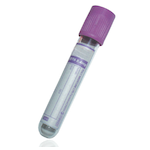Suitable Specimen Types
- Plain Spot Urine
- Serum
- EDTA Plasma
- Li Hep Plasma
Specimen Transport
First class postSample Processing in Laboratory
Place in toxicology box in cold room.Sample Preparation
None requiredTurnaround Time
7 days (If urgent please contact toxiolocy on bleep 3289)Sulphonylurea Screen (Sulfonylurea Screen)
General Information
The sulphonylureas act mainly by augmenting insulin secretion and consequently are effective only when some residual pancreatic beta-cell activity is present; during; long-term administration they also have an extra-pancreatic action. All may lead to hypoglycaemia 4 hours or more after food but this is usually an indication of overdose, and is relatively uncommon.
The qualitative analysis of plasma or urine for the presence of sulphonylurea drugs is a specific investigation and is performed when requested or when the drug history of the patient indicates the possibility of sulphonylurea ingestion.
The follow compounds can be detected using this method:
- Chlorpropamide
- Glibenclamide
- Gliclazide
- Glimepiride
- Glipizide
- Tolbutamide.
Patient Preparation
As this test is primarily used for the investigation of unexplained recurrent or profound hypoglycaemia and to aid the differential diagnosis of insulinoma, the patient should be hypoglycaemic (i.e. venous plasma glucose of < 3 mmol/L and symptomatic).
Reference Range
This is a screening test for the presence of sulphonylureas in plasma or urine. As such, we will report results as Positive or Negative for the drugs listed above. All can be detected reliably at concentrations of 0.5 mg/L in urine and plasma.
Specifications
- EQA Scheme?: Yes
- EQA Status: Sample exchange scheme.
